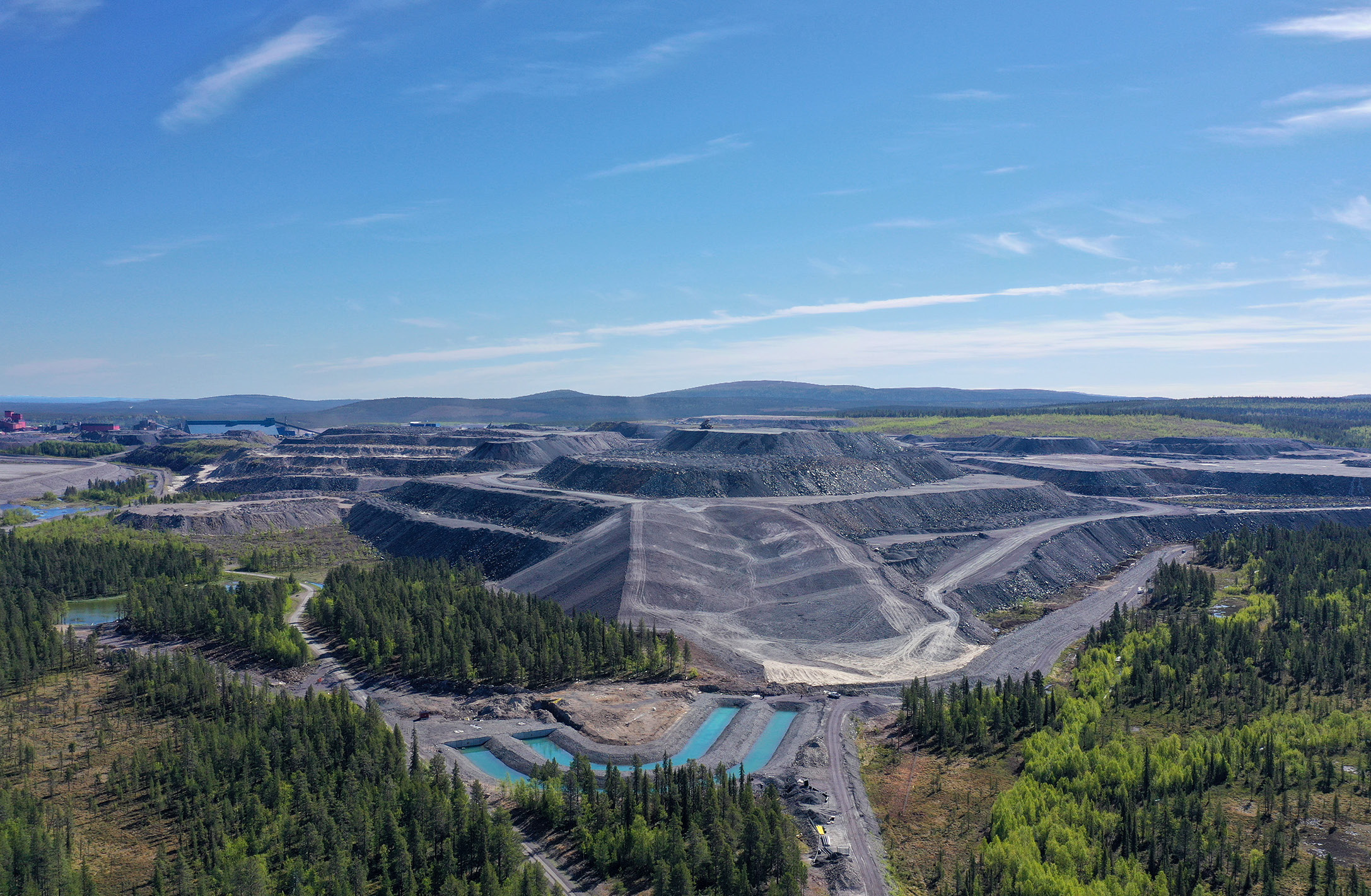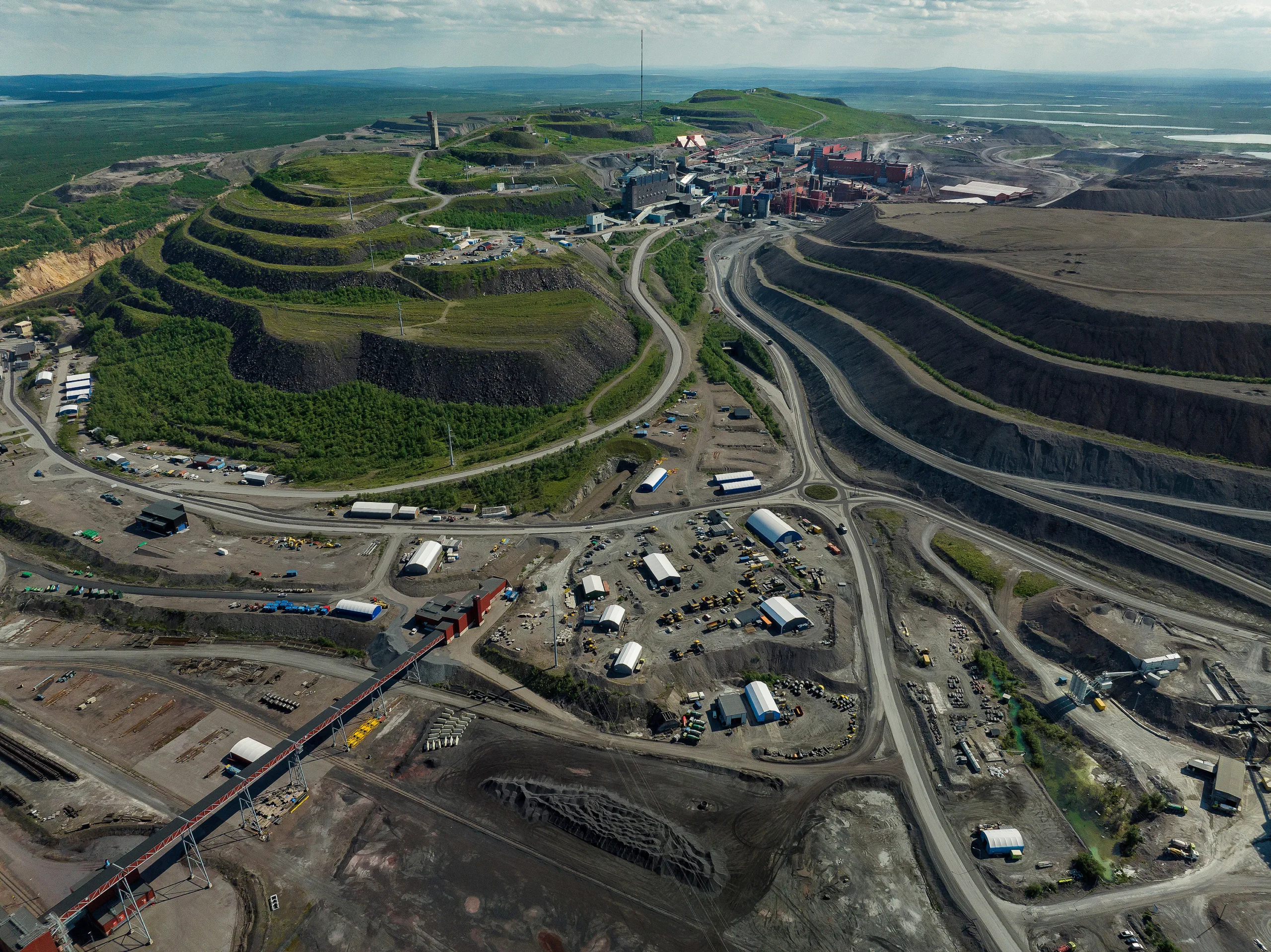Analysis of the seismic event in Kiruna on May 18th completed
The completed analysis has provided the basis for a report to the Swedish Work Environment Authority. The analysis shows that, among other things, a combination of several factors coincided around the production area (block 22), the epicentre of the event. "Now it will be a matter of learning from what has happened and focussing on measures that will prevent a similar event from happening again," says Mirjana Boskovic, seismology and rock mechanics specialist at LKAB.
Background:
At 03:11 a.m.on Monday, May 18th, the largest seismic event ever to occur in the Kiruna mine took place. The event occurred at a level of -1,146 metres (from zeroing point) in the mine’s foot-wall, and registered 3.3 on the local magnitude scale and 4.2 on the moment magnitude scale. The mine was evacuated and 13 people who were at work under ground left their work sites and returned to surface level. No one was injured.
Inspection began and it was noted that extensive rockbursts/outfall had occurred, above all, in the immediate area of the point at which the start of the event had been identified. Mine production began in small scale on May 21st, reaching 75% of full production capacity in July.
Near the epicentre of the event, which occurred in block 22 and part of block 26, production is still at a standstill.
How have the survey and analysis prior to the report to the Swedish Work Environment Authority been conducted?
Since late May, rock mechanics engineer Erik Swedberg has managed the cross-functional analysis group that was formed after the most acute measures had been taken following the event. The task has been to identify the underlying causes and to recommend future measures. Once the analysis had been completed Erik Swedberg and Mirjana Boskovic presented the results for various work groups in the mine. The analysis provided the basis for a report that was submitted to the Swedish Work Environment Authority in early August.
“News of the tremor ‘reverberated’ globally among seismologists and rock mechanics engineers, and we have brought in the necessary expertise to conduct the analysis. We have previously collaborated with, among others, Uppsala University. This time we have also had contact with, for example, specialists from Canada and various European seismological institutes,” says Erik Swedberg.
What actually happened on May 18th?
In the area around block 22 there are three shafts that are used to dump mined material down to track level for subsequent haulage. Between the shafts, which are about 300 metes long, rock pillars are formed.
It is probable that the starting point of the seismic event was a pillar failure; i.e., a pillar that collapsed. The analysis shows that this then developed into a large-scale failure in the rock mass in an area covering several hundred metres.
What were the underlying causes?
The event was caused by a combination of several factors.
1) Several failures in the rock mass and pillars between vertical shafts. The shafts in the area have been problematic and, despite renovations, they have become larger; consequently, the pillars have become narrower, thereby increasing stresses in the rock mass. Starting in a shaft pillar, the event has subsequently initiated displacement in an area of several hundred metres of rock.

2) Complex geology. Large-scale geological structures have a major impact on stresses in the rock mass. North of the epicentre of the event a cross-cutting diabase dike has functioned as a boundary for larger rockbursts/outfall after the seismic event.
The ringed pink/purple/grey area shows a diabase dike immediately north of the seismic event’s epicentre.
3) Elevation difference between blocks 22 and 26. We have experienced a slow-down in the production rate in block 22, which means that block 26 has been mined much deeper than block 22.
4) Layout with longitudinal sublevel caving instead of transverse sublevel caving. The orebody is narrow from the 993-metre level upwards, which means longitudinal sublevel caving has been used. Numerical modelling shows that when the orebody is narrower, there are higher stresses in the production areas. To reduce rock stresses and achieve better caving when blasting, traverse sublevel caving has been used at the1022-metre level since last year. Unfortunately, traverse mining had not been in use long enough to gain the desired advantages.

Blue indicates longitudinal sublevel caving at level 993; red is the traverse layout at level 1022 in block 22. The coloured areas show mined-out ore at these levels.
5) High stresses around galleries. A gallery runs parallel to the orebody on the footwall side and is used, for example, for transport within the production areas. The analysis shows that there are higher rock stresses around the galleries, stresses which in combination with, among other things, the geology and the shafts, are also unevenly distributed.
3.3 or 4.2 – what was the magnitude?
In seismology various instruments are used depending on what is to be measured. The purpose of the local system used by LKAB is primarily to register the minor seismic events and identify the location of their occurrence in the mine. Therefore, the measurement instruments, the so-called geophones used in the Kiruna mine, have a limited measurement range.
“We knew from the outset that the event had a magnitude greater than 3.3, since the geophones reached their measurement limit. Therefore, in this case, we have used the national seismic system. We are planning to install geophones that have a wider measurement range,” says Mirjana Boskovic.
The seismic event reached a moment magnitude of 4.2. This is measured with completely different instruments which are not comparable with LKAB’s local scale.
How can we prevent this from happening again?
LKAB is working on several fronts. An initial recommendation is to lower block 22 to a level approaching that of block 26. Also of current interest is the project “Bergsäkerhet KUJ” (Mine Safety Kiruna Under Ground), which began in April and has now gained additional momentum. This work is being done in the form of an umbrella project which will address specific issues and, in turn, result in concrete measures. Collaboration has also begun in a closely related project within the LKAB development programme “Gruva 5.0” (Mine 5.0).
What is the role of the Swedish Work Environment Authority?
The Swedish Work Environment Authority has a mandate from the Government and the Riksdag to ensure that laws relating to work environment and working hours are followed by companies and organizations. By law, LKAB must report serious incidents to the Swedish Work Environment Authority, which makes an assessment and follows up with requirements and remedial measures. Occasionally, representatives from the Swedish Work Environment Authority make site visits for inspection and dialogue.





